This post may contain affiliate links. This just means I may receive a small commission at no extra cost to you for helping them promote their product or service. I don’t endorse any services I don’t personally use or recommend.
I’d envisioned a lovely quiet boat ride through the wind-swept reeds of Southern Iraq. Sleeping beneath a blanket of a million stars, uncorrupted by the modern world’s light pollution. What I got was a little different. Videos of these still-water marshes beneath blue skies were the inspiration behind the entire trip to Iraq. The Iraqi marshes are thought to be the real-world location of Adam and Eve’s Garden of Eden. Being a devout skeptic, this was less of a draw than the marshes being Mesopotamian. Fed by the flooding of the Euphrates + Tigris Rivers, this marshland was once one of the most beautiful and thriving wetlands on planet earth. Not anymore.
Like most things on social media, the reality of the Iraqi Marshes is distorted.
And as much as I wish I could say the marshes were beautiful, a relic of a lost time, and offered a glimpse of an ancient way of life… that would be a convenient lie.

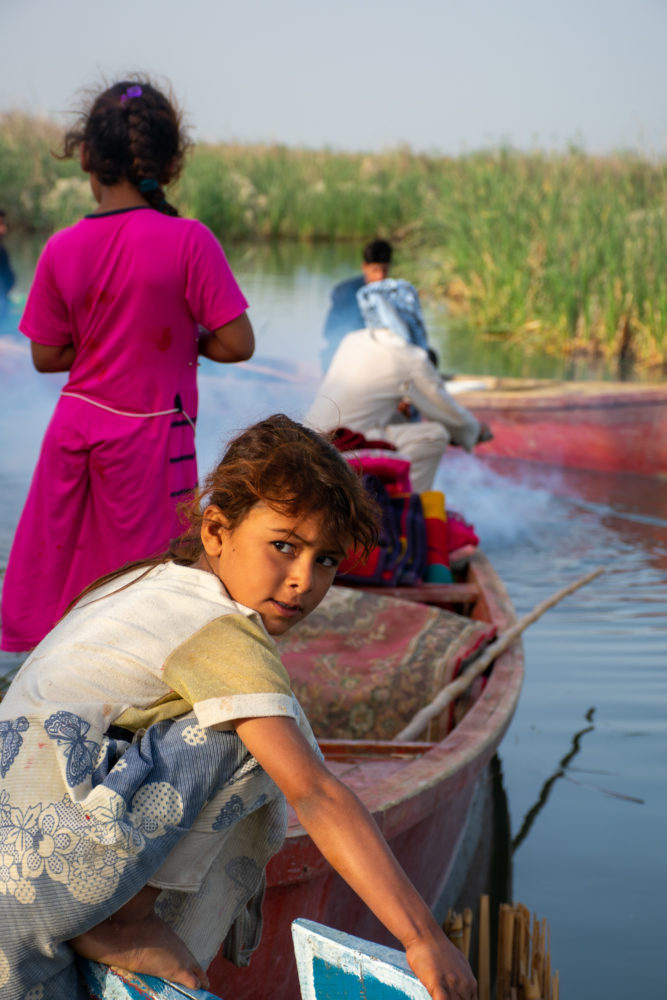
Our experience visiting the marshes of Mesopotamia
The road from Baghdad to Chibayish was long, flat, and dusty. Federal Iraq isn’t the kind of desert that’s swept in sand. There are no orange dunes to marvel at. The landscape is instead predominately flat, crusty, and shades of pale yellow. For 6 hours, we drove with nothing to keep up entertained or mark the time except the military check-points every hour. Here, we would present our passports, and answer a slew of questions “Where are you going”, “Where have you come from”, and “Why are you here”.
Our plan was to arrive in Chibayish and head into the marshes straightaway. Watch the sun go down and enjoy an evening staying with a local family out on the water. People have been living primitively in reed homes deep in the marshes for centuries. But as with most ancient ways of living, times were changing. It was a hard life that shouldn’t be forced upon anyone. Most families now manage to eke out a living on dry land and live in Chibayish. But a select few still call the marshes home. Some out of necessity, some out of choice.
Saddam Hussein + The Demise of The Iraqi Marshes
The real demise of the marshes came from Saddam Hussien. When he decided to forcibly drain them, 250,000 people still lived in the Iraqi marshes. But now the marshes have shrunk to only 10% of their original size. And only 40,000 people remain.
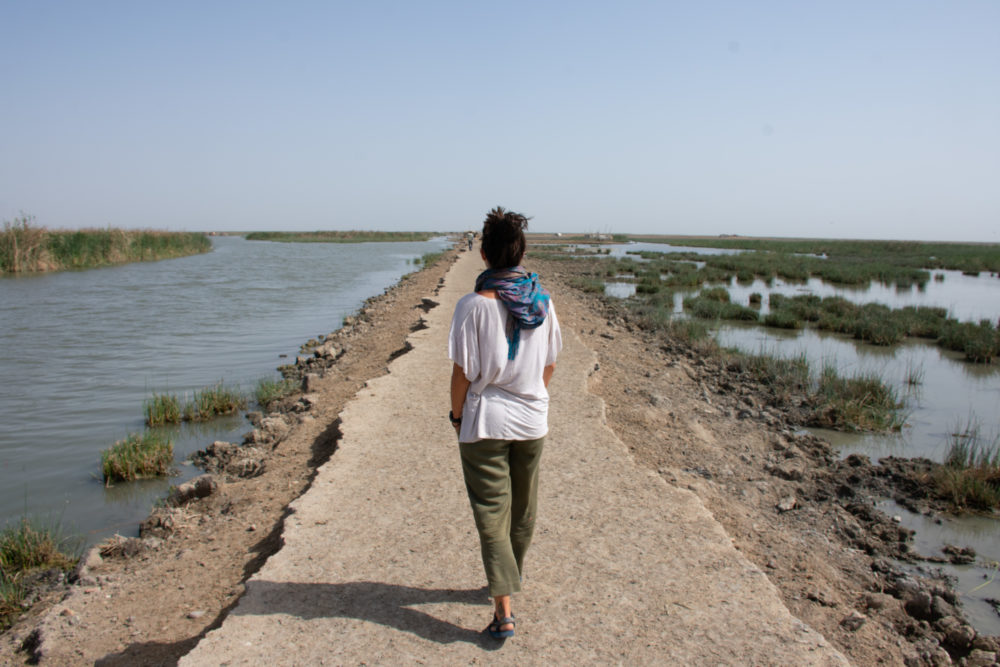
These people were fishermen. Living off the land with their carefully crafted Mashoof canoes. But as the waters drained the ecosystem was devasted. It become more polluted, more salinated, and less hospitable to the fish these people relied on. This was the final straw that broke the camel’s back. The Mesopotamian Marshes had been threatened for decades, but Saddam sealed their fate and forced those who called the Marshes home to flee to less toxic waters.
Unconventional Eid Celebrations in Chibayish
Chibayish itself, to put it delicately, doesn’t have much draw for tourism. There isn’t a single accommodation in the small town and we were hoping to not linger long. It was dusk and it also happened to be Eid, the final day of Ramadan, and one of the most important holidays in Islam. Unexpectedly, as the final call to prayer broke the silence, a barrage of automatic gunfire also joined the mix.
Much like my rural redneck hometown during the 4th of July, locals were celebrating Eid with guns. Triumphantly shooting whatever guns + weaponry they owned into the air. Unlike in my USA hometown, the guns seemed to be predominately fully automatic assault rifles, and I was justifiably concerned that the barrage of bullets fired directly into the sky had to land somewhere.


This display of celebration was not common and would make the Iraqi news that week.
Unfortunately, we had to wait for our boatman. Which meant standing alone in the dark alongside the marsh while hundreds of people shot rifles haphazardly all across the city. It wasn’t the arrival we anticipated. It was, however, an omen for all the adventure that was to come.
Entering the Marshes
By the time our boat arrived, it was fully dark. The few lights from Chibayish city cast a yellow glow on the water, but beyond the first set of reeds, total darkness. Evan and I hopped into the thin canoe strapped with an outboard motor and hoped for the best. With only one headlamp between our two boats, our captains expertly navigated the black waters and blind corners at high speed. We had a long way to go into the marshes and they wanted to get there quickly. The smell emanating from the water, slightly sulfuric but possibly sewage, made me inclined to avoid the spray coming into the canoe.
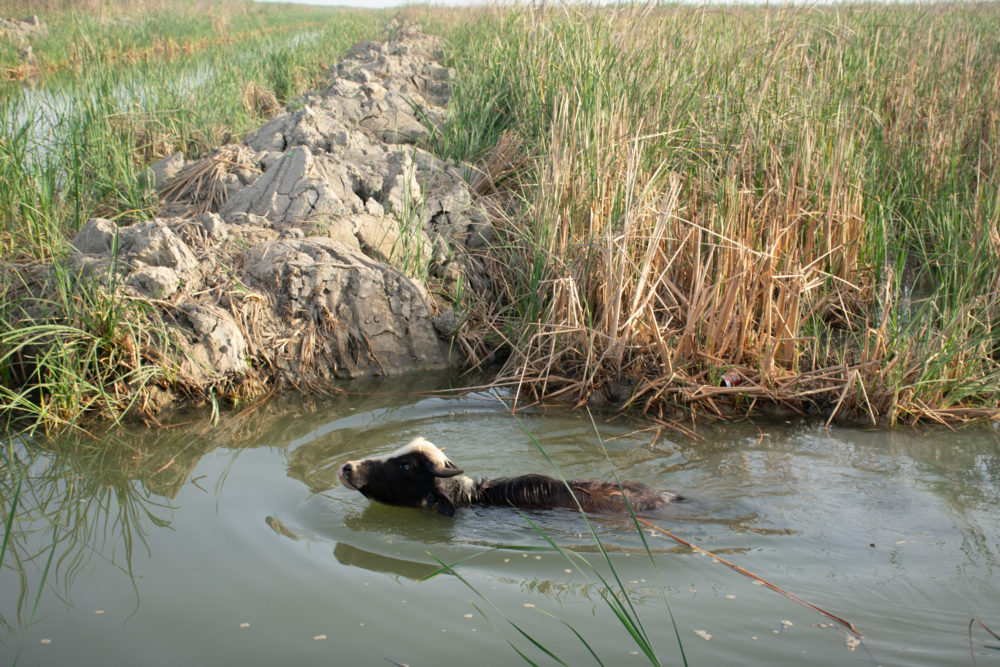
When the boat with the lamp sped ahead leaving us far behind, we navigated in total darkness. A violent splash revealed five 1,000-pound Water Buffalo swimming beside us. As the boat finally slowed and nosed up to a reed-covered island, we could see the home for the first time. A tightly-woven structure made entirely of marsh reeds provided shelter for the cooking fire and in a single large room Abou Haidar and his family. Why the house doesn’t burst into flame from the campfire is beyond me.
Abou Haidar – The Man of the Marshes
Our host was a thin exuberant man in his 50s or 60s. He speaks only Arabic and loves to sing traditional Iraqi songs while cooking by the fire. We listened to many the night we stayed. He doesn’t actually live here. Not all the time anyway. He alternates between his small home in Chibayish and where he feels most comfortable…the Iraqi marshes. He has a tattoo on his arm of his own name. It’s a remnant from the Iran/Iraq war. It would have been used to identify his body if he was killed in action. Abou Haidar, as he tells it, first came back to the marshes in hiding when he deserted this war. The maze-like fabric of the marshes is pretty much only navigable by people familiar with its inner workings. Probably why it’s so popular with smugglers. People, drugs, weapons, most everything illegal that enters (or exits) Iraq comes from the leaky marshland borders.


Today, he is famous for marshland tourism. He frequently opens his marsh home to travelers to give them an immersive experience in the marshes. He hopes to save the marshes and his way of life through tourism dollars.
Personally, I think it’s the perfect example of the power of adventure tourism.
We cooked together, ate together, met his lovely family, and the next morning he took us on a boat ride through his homeland. Letting us see the marshes through his eyes.
Sleeping in the Reed House
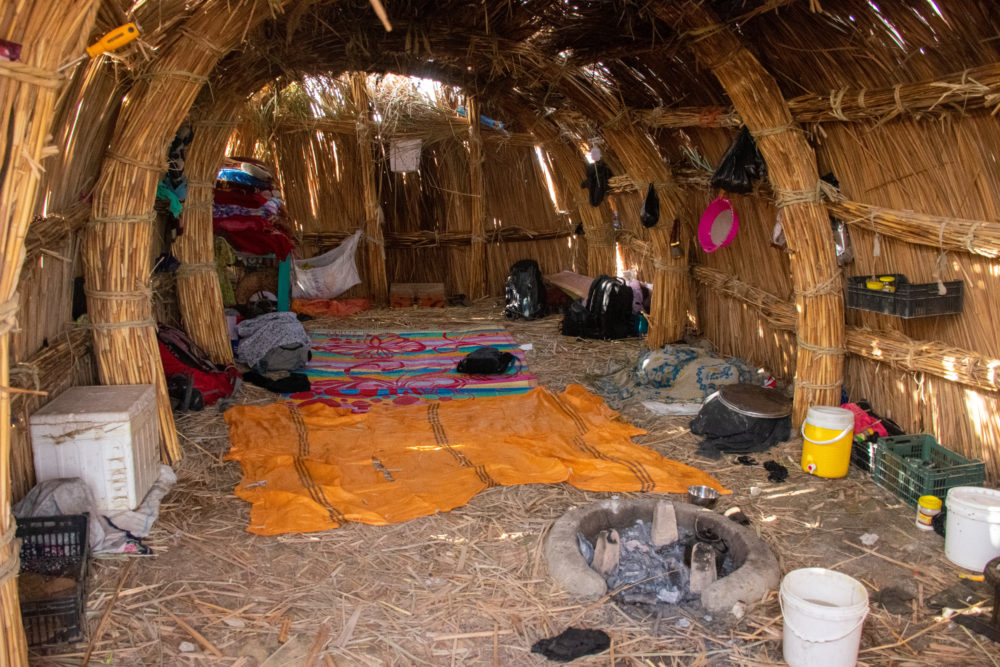
Now, this is where I’ll lose a lot of you.
We had anticipated uncomfortable sleeping conditions, but we had severely underestimated the situation. Without a sleeping bag, blanket, or pillow we curled up just five feet from the fire (to ward off mosquitos) on the hay-covered floor. The house was pressed up against their buffalo pen out back, which meant mice and insects often crawled through the porous walls. To make sleeping conditions less enjoyable, the resident chicken woke up at 3 AM mistaking the middle of the night for the morning. Crowing from the roof every 15 minutes or so for the next 2.5 hours.
Needless to say, we got just about no sleep.
But the two other guests staying with us were worse off. The woman from Bulgaria woke up to find that her entire face was swollen like she had been stung by 100 bees. Her lips ballooned and her eyes were swollen shut. I gave her all the Benadryl I had and secretly thanked my lucky stars I wasn’t in her state.
Stepping out into the morning light the marshes were actually incredibly pretty. The putrid smell still lingered and I could now see the still waters were visibly off-colored with pollution. But as muscular black buffalo swam through the small alleyways of water and boatsmen paddled by quietly, I couldn’t help but notice how serene the place was.
We used the “bathroom” trench on the side of the house and settled down on the floor for breakfast. Fresh buffalo milk curd, creamy and rich, with tahini and date syrup (an Iraq favorite) to dip your fresh fire-baked bread in. And of course loads of tea.
Touring the Mesopotamian Marshes
For the next 4 hours, we jetted through the marshes in our small boat. We visited Saddam’s old abandoned roadway, now surrounded by miles of marshland, and a few other clusters of homes within the maze of waterways. Soon the temperature was soaring above 100 degrees and it wasn’t even 10 AM. Baking in the hull of our canoe, Evan was also suffering from some mild food poisoning that was taking a few days to shake off. So when, Abou Haidar asked if we wanted a swim…we decided the potential for heatstroke outweighed our distaste for swimming in a very polluted swamp. Even now I still stand by my decision.
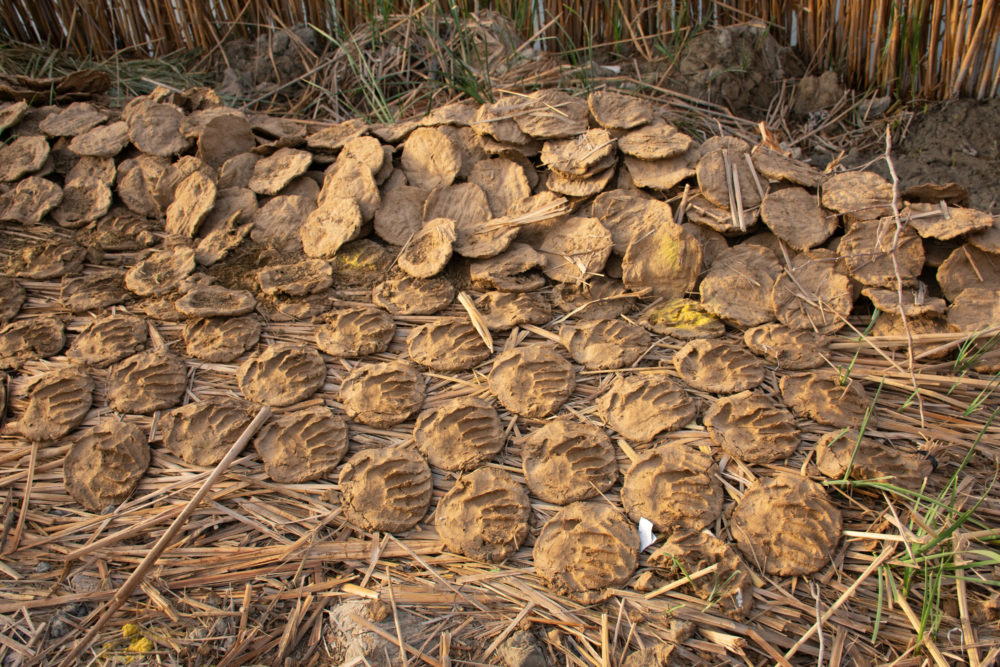
Abou Haidar directed the boat to a cleaner section of marsh and removed his long white robes to join us. I drew the line at head submersion and walked through the thick sludge along the bottom of the water toward the deeper middle. We accepted an offering of marsh plants, a favorite snack for those who live in the area, which tasted like about what you would expect. Dirty, swampy, lettuce. There was less to see in the marshes themselves than I thought. Mostly we rode around spotting buffalo, navigating around aggressive feral dogs, and enjoying the serene corners of the marshland still untouched by human hands.
For more details on travel in Iraq check out our Federal Iraq + Iraqi Kurdistan Road Trip itineraries. Or browse all our Iraq blog posts for more info.
Overview of Our Time In The Iraqi Marshes
Although longer than most, our visit was a short one. It feels weird to pass judgment on a place people live entire lifetimes after only visiting for less than 24 hours. I enjoyed our adventure in the marshland. It helped me understand both the endemic threats against the landscape and why it’s so important to protect.
In my mind, I can envision the beauty that once was here. You witness glimmers of it throughout the day. And then reality breaks through. Plastic bobbing near a small school of dead fish. A whiff of methane gas. The brown clumps of earth now showing around the water’s edge as the marsh shrinks each year.
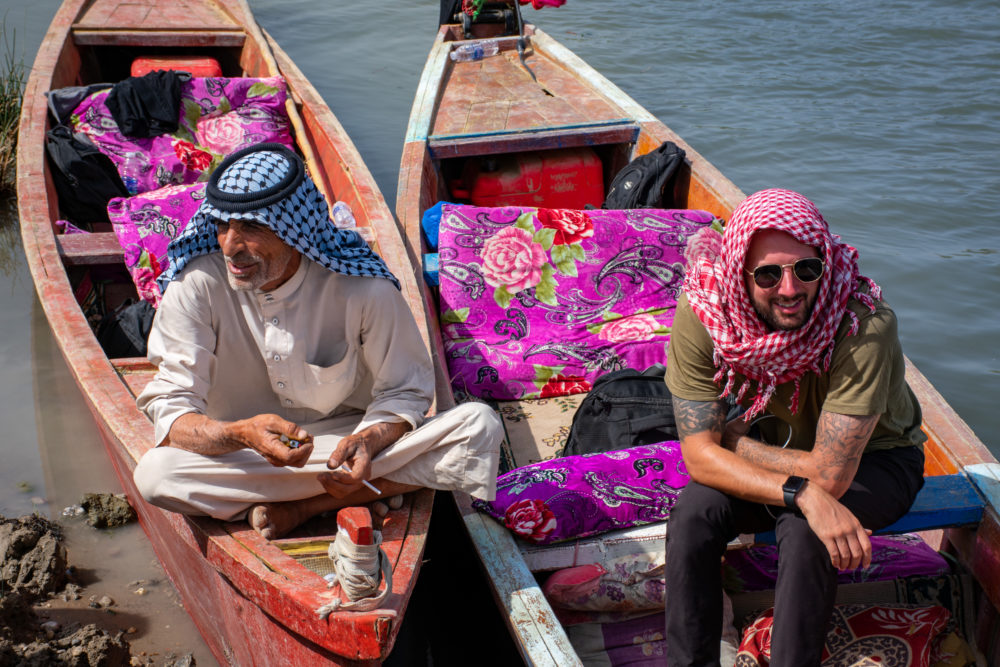
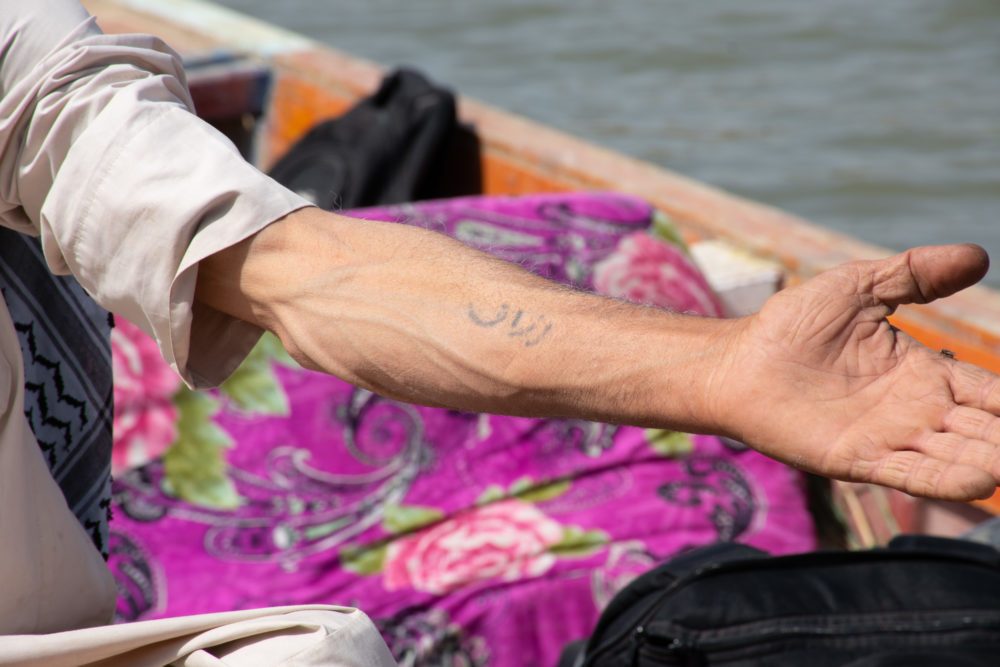
Abou Haidar is a personality. Warm and welcoming, he manages to make you love the marshes and feel right at home in his home. Iraq was a country that I loved. And although the marshes were not idyllic and romantic, they were one of my favorite destinations in the country. Up against the snow-capped mountains of Iraqi Kurdistan and dazzling mosques in Karbala, there is stiff competition.
Do I Recommend You Visit the Iraqi Marshes?
That depends on who you are.
If you take one thing away from this story, understand that the marshes are a unique ecosystem worth preserving through tourism…but it takes a special kind of traveler to stay overnight. We are that kind of traveler. I think most backpackers used to a fair amount of discomfort would do well.
But everyone who travels to Iraq should pay the marshes a visit. This is the cradle of human civilization…where it all began. And it’s on the brink of extinction. As are we. If the thought of spending a night on a hay-strewn floor huddled around a campfire sounds like the worst night of your life then consider a simple day visit.
Apparently, our night without blankets and pillows was an anomaly. So, your stay could potentially be far more luxurious.
Iraqi Marshes Tour Guide Info
If you do decide to visit the Iraqi marshes contact Bilweekend. They are the best tour company in the country. Tourism is new. As a whole, the companies are working out the kinks. But the guys at Bilweekend are extraordinarily knowledgeable and well-connected, which may be the most important quality to have in an Iraq tour guide.
Save This Post For Later!

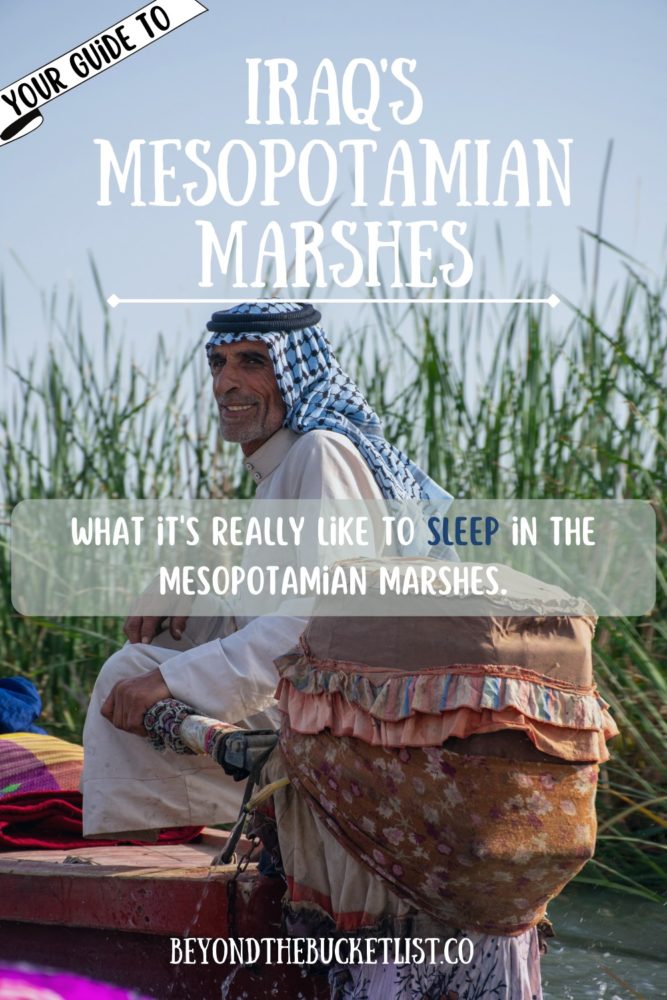
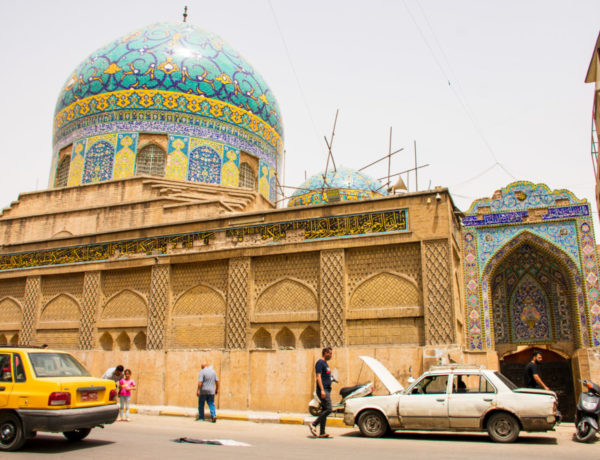
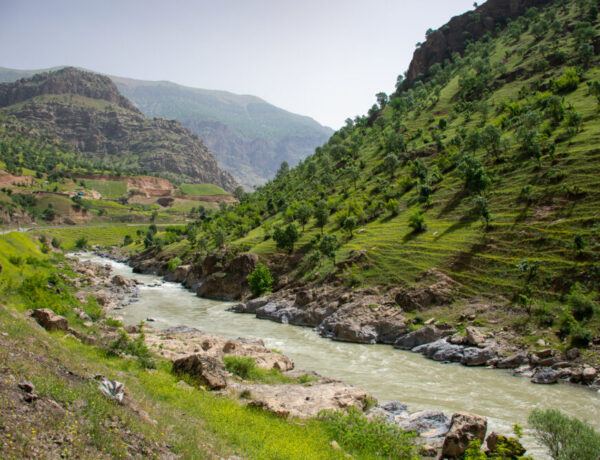
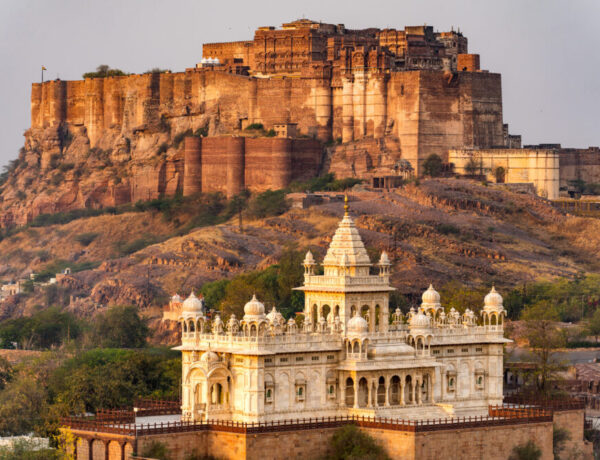


No Comments